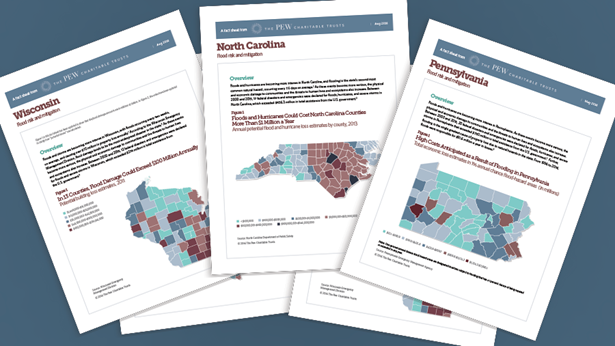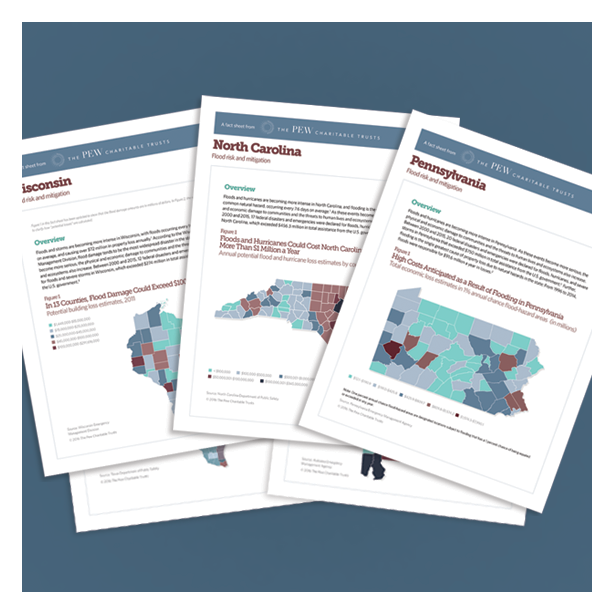Colorado
Flood risk and mitigation
Overview
Flooding is the third most common and costly natural disaster in Colorado. As floods and rainstorms become more severe, the physical and economic damage to communities and the threat to human lives increase. Since 2013, two flood-related federal disasters and emergencies were declared in Colorado, costing more than $427 million in U.S. government assistance.1


Federal flood insurance helps communities prepare
Forty-seven communities in Colorado participate in the National Flood Insurance Program’s Community Rating System.2 The voluntary program offers communities lower insurance premiums if they have flood plain management practices that exceed the program’s minimum requirements. These practices include buying out flood-prone homes, elevating buildings, and flood-proofing structures. Fort Collins has taken advantage of this program and has built flood resilience into its city planning, earning recognition by the Federal Emergency
Management Agency as one of the “best of the best” areas for flood plain management. This classification has garnered Fort Collins residents a 40 percent discount on their insurance premiums.3

Importance of policy
Communities must take steps to better prepare for weather-related catastrophes such as floods. And federal policymakers should consider policy reforms that would improve flood protection and preparation; minimize disruptions to the economy; and reduce costs to the federal government and taxpayers. These steps include:
- Increasing federal investment in flood mitigation programs that help communities prepare for and reduce the damage from floods.
- Improving resiliency requirements for infrastructure built and rebuilt in flood-prone areas.
- Protecting ecosystems, such as wetlands, salt marshes, and dunes, that can act as barriers to storms and help shield property.
- Reforming the National Flood Insurance Program to better communicate actual risk, break the cycle of repeated loss and rebuilding in the most flood-prone areas, and provide incentives to compel communities and homeowners to better prepare for floods.
Endnotes
- Federal Emergency Management Agency, “Disasters: Total Number of Declared Disasters by State/Tribal Government and by Year,” accessed Jan. 2, 2018, https://www.fema.gov/disasters.
- Federal Emergency Management Agency, “Community Rating System” (April 2017), https://www.fema.gov/media-library-data/1503240360683-30b35cc754f462fe2c15d857519a71ec/20_crs_508_oct2017.pdf.
- Federal Emergency Management Agency, “National Flood Insurance Program Community Rating System Fact Sheet” (June 2017), https://www.fema.gov/media-library-data/1507029324530-082938e6607d4d9eba4004890dbad39c/NFIP_CRS_Fact_Sheet_2017_508OK.pdf.














